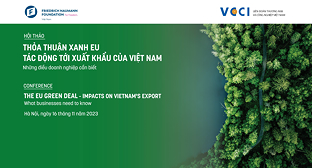Commentaries
In December 2017 the European Union issued Regulation 2321/2017, amending the basic EU Anti-dumping Regulation (1036/2016). Among other things, Regulation 2321/2017 sets out new rules for the calculation of normal value in the case of significant distortions that affect cost and price and removes rules which previously allowed for normal value to be determined via an analogue country methodology for non-market economy World Trade Organisation (WTO) members.
Research Paper: Options for Disciplining the Use of Trade Remedies in Clean Energy Technologies
03/08/2017
Author: Kim Kampel (International Centre of Trade and Sustainable Development - ICTSD) Time: 5/2017
Many countries follow multi-lateral trade practices and offer the most favoured nation status on non-tariff grounds. Despite the general trend towards openness and integration, domestic as well as international pressures have ensured trade protectionism in the form of tariffs, anti-dumping and other safeguard mechanisms.
The US President Barack Obama, moments before signing The Manufacturing Enhancement Act of 2010, stated in his speech that “...[manufacturers] often have to import certain materials from countries and pay tariffs on those materials. This legislation will reduce or eliminate some of those tariffs, which will significantly lower costs for American companies across the manufacturing landscape...” (Obama,2010). Input trade liberalization certainly has benefits.
The Agreement on Implementation of Article VI of the General Agreement on Tariffs and Trade 1994 (hereinafter “Anti-Dumping Agreement”) defines the term “dumping” as the introduction of a product into the commerce of another country at less than its “normal value”. Needless to say, determination of a “normal value” is critically important in any anti-dumping duty investigation...
This article explores China’s behaviour in taking antidumping actions against its trading partners with a focus on those actions having been challenged under the WTO dispute settlement mechanism. It argues that the typical motivations behind China’s resort to antidumping include protection, retaliation, industrial development, and export promotion. These motivations would likely outweigh China’s observance of WTO obligations in deciding whether to impose antidumping measures...
 Home
Home
 About Us
About Us




















